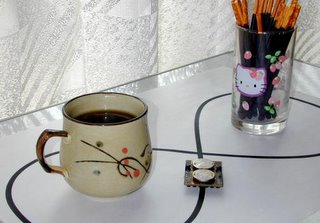Lung cancer

Lung cancer is the uncontrolled growth of abnormal cells in one or both of the lungs. While normal lung tissue cells reproduce and develop into healthy lung tissue, these abnormal cells reproduce rapidly and never grow into normal lung tissue. Lumps of cancer cells (tumors) then form and disrupt the lung, making it difficult to function properly.
More than 87% of lung cancers are smoking related. However, not all smokers develop lung cancer. Quitting smoking reduces an individual's risk significantly, although former smokers remain at greater risk for lung cancer than people who never smoked. Exposure to other carcinogens such as asbestos and radon gas also increases an individual's risk, especially when combined with cigarette or cigar smoking.
The Prevention of Lung Cancer
Encouraging behavior modification is a significant first step to ultimately reducing the high number of lung cancer deaths each year. Yet, that is only part of the solution. On the latest research front, scientists are studying methods to actually prevent the development of lung cancer through natural and synthetic materials. In addition, researchers believe that legislation designed to dissuade people from starting to smoke, coupled with efforts to help people quit, will have a positive impact on the number of new lung cancer cases in the future.
Studies have confirmed that 85 to 95 percent of lung cancers are smoking related. Therefore, the primary way for people to reduce their risk of developing the disease is to quit. To non-smokers, this may seem easy; however, as many smokers who have tried to quit will attest, this is extremely difficult. The addiction to nicotine has been likened to that of heroin, perhaps even more powerful. This may account for why so many smokers fail numerous attempts to quit, as well as the strong rationale to increase assistance for those people who desire to quit smoking permanently.
While the risk for former smokers remains elevated – as compared to a non-smoker – the risk continues to fall with the number of years of smoking cessation. After 10 years of abstinence, a person who has quit smoking reduces their risk anywhere from 30 to 50 percent.
What is Chemoprevention? For individuals who demonstrate the greatest risk, researchers are currently conducting several new trials to test the use of natural and synthetic substances to prevent development of the disease. This new research has been coined, chemoprevention. These methods, including the use of chemotherapy, vitamins, diet, and hormone therapy, are being tested to not only reduce the risk of cancer, but also to reduce the chance that the cancer will recur (or come back). Some of these are being tested as single agents, while others are being tested in combination.
Because of the long lasting effect that tobacco’s cancer causing carcinogens have on the bronchial epithelium (lining of the lungs), each trial participant’s lung cancer risk – which correlates to their smoking history – is assessed. However, since not all smokers develop lung cancer, and not all patients diagnosed with the disease smoked, the risk assessment is not sufficient. Therefore, additional research to identify reliable proteins or gene biomarkers will be helpful in determining a person’s actual risk.
Today, we can detect changes in the cells of the base lining of the lungs from normal to pre-cancerous (dysplasia). There are already many treatments under investigation that may be used to successfully treat these dysplastic cells. In addition, new studies are helping investigators determine at what point chemoprevention becomes an appropriate option for pre-treating lung cancer.

